| Published
on 23
Oct
2008 |
All rights reserved.
|
|
Alto (global)
|
Debut: 2008
Predecessor: Alto (1998) |
|
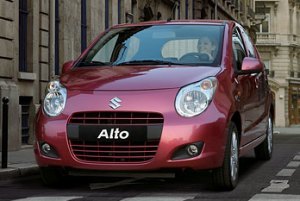
|
India-made Alto intends to be a
low-cost transportation
|
Alto
is a long serving nameplate in Suzuki. In recent years, Alto is split
into two different versions – the domestic version is a funky K-car to
suit the taste of young Japanese women, while the global version is
designed to be a low-cost entry-level transport. The new generation
global version is no exception. It is built in India by Maruti (the
subsidiary of Suzuki) and supply to rest of the world, including
Europe, where 60,000 units annual sales volume is anticipated. However,
its largest market is still India, where 227,000 last generation Altos
were sold in 2007 alone.
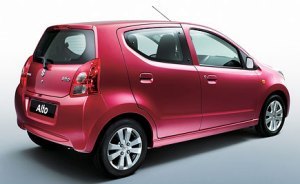
|
To save costs, rear windows pop out
rather than wind down.
|
Predictably,
this
car is cheap and free of frills. Its shinny hard plastics interior
makes Hyundai i10 look classy. The interior is very basic. For example,
the steering wheel does not adjust for reach. It even uses pop-out rear
windows instead of winding ones to save costs. You will get decent
space up front, but tall passengers will find rear knee room tight due
to the 2360 mm wheelbase. The whole cabin looks grey and boring, a
sharp contrast to the pretty exterior.
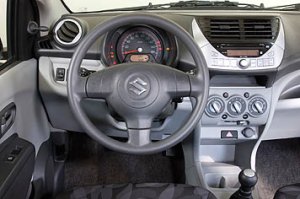
|
The shinny hard plastics interior
makes Hyundai i10 look classy...
|
Driving
dynamics is
equally modest. The 1.0-liter three-cylinder engine revs quite sweetly,
but you are unlikely to be pleased with its lack of bottom-end torque
or its modest performance – 96 mph top speed and 0-60 mph in around 14
seconds. What it does impress is fuel economy at 62.7 mpg, partly
thanks to the slippery drag coefficient of 0.30. In corners, the Alto
works just like a low-cost city car. It rolls a lot, and the steering
has a lot of slack around the straight ahead. Bump absorption is
reasonably good because it is tuned for poor Indian roads, but small
irregularities on road surfaces could transmit a lot of harshness and
noise into the cabin. |
Verdict:    |
| Published
on 23
Oct
2008 |
All rights reserved.
|
|
Wagon R
|
Debut: 2008
Predecessor: Wagon R (2003) |
|
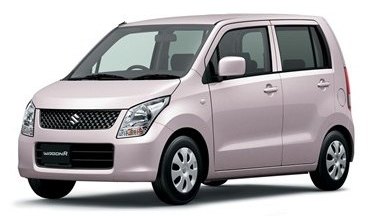
|
Wagon R has been Japan's top seller
for years. This tradition is very likely to continue in the new
generation.
|
Since
its birth in 1993, Suzuki Wagon R repeatedly topped the car sales chart
in Japan for many years, including the last 4 years. Even the aging
last generation could still record 224,000 units sales in 2007, beating
Daihatsu Move (200,000 units) and Honda Fit (148,000 units). This
success is down to its combination of low price, spacious interior and
versatile layout. The new generation from 2008 continues to develop in
these directions.
The new Wagon R does not change too much its clothes. Basically, to
envelop maximum space it has to retain a boxy exterior. However, Suzuki
still put more styling touches to it in the form of clamshell bonnet,
corner-wrapping headlamps and gentle curvy surfaces around wheelarches.
Build quality is also clearly improved, as shown by the tightly fitted
body panels. Inside, the dashboard design, materials and colors are
markedly different from its predecessor. You are less likely to feel
the
negative effect of low price.
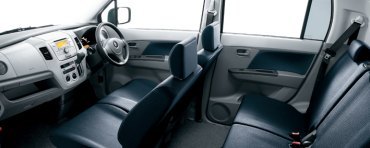
|
You can hardly get more space from
another K-car, especially when the floor is completely flat
|
The new car
sits on
a new platform with 40 mm longer wheelbase. The roof grows a further 15
mm to 1660 mm, which translates into more headroom than you will ever
need. Predictably, you can hardly get more space from another K-car,
especially when the floor is completely flat both front and rear. The
cabin is also full of flexible features. The rear seats splits, slide,
recline and fold flat. The front seats fold flat or recline to form a
bed together with the rear seats. Besides, there are countless of
storage cubbies.
The tall body Wagon R is not the kind of car that you will use to
attack twisty roads, even though the top 0.66-liter turbocharged engine
produces respectable output. However, new suspensions with revised
geometry and strengthened mountings do improve ride refinement and
reduce noise. Transmission include 5-speed manual, 4-speed automatic
and a Continuously Variable Transmission with 7-speed override. Very
versatile.
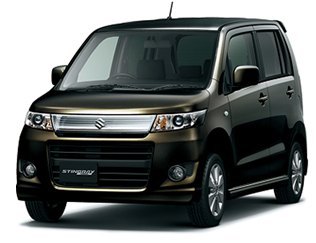
|
"Stingray" ridiculously takes name
from a classic Corvette...
|
Traditionally,
most
customers of Wagon R are women. To capture men, this time Suzuki also
produced a version of the car called “Stingray”, whose name is
ridiculously taken from a classic Corvette. This car has a rather
different (and cooler) exterior and interior design. Mechanically,
however, it is nearly the same. Anyway, the prettier and higher quality
new generation Wagon R should easily retain its title as Japan’s best
selling car.
|
Verdict:     |
Published
on 10
Jun 2011
|
All rights reserved.
|
|
Alto (Japan)
|
|
Debut: 2010
Predecessor: Alto (Japan) (2004)
|
The domestic version of
Alto is very different from its international sibling, no matter
exterior, interior or powertrains. Needless to say, it is designed to
qualify the light automobile category ("K-cars"). This results in a
shorter and narrower body shell as well as a 660 cc engine. What the
Japanese car excels is packaging, which looks more upmarket than the
global version. Unlike the latter, it has proper rear windows, keyless
entry, engine start button, USB and iPod connectivity. The interior
looks a million miles better than the India-built version, of course,
thanks to a more stylish dashboard and light color textured plastics.
However, by the high living standard of Japan it is only qualified as a
basic transport. You won't get the same customization, turbo power or
fancy seating plans as in most other K-cars.
The Japanese Alto sits on the platform of
Wagon R, whose 2400 mm wheelbase is 40 mm longer than the old car as
well as its international version. This, accompany with a taller roof,
higher hip points and more efficient packaging, results in more
interior space, especially to rear passengers. On the other hand, the
use of more high-strength steel cuts its kerb weight by 10 kg. That
means a basic version with manual transmission weighs only 710 kg.
Apart from lower weight, a more slippery shape also helps performance a
little.
Powering the car is the familiar 658 cc three-cylinder with 54ps. For
transmission, you get the choice of 5-speed manual, 4-speed auto or a
new Jatco CVT. The latter offers a super-wide ratio spread of 7.28,
helping fuel economy and cruising refinement. However, full-effort
acceleration is noisy due to rubber band effect, whereas the little
engine lacks firepower to overtake other cars.
|
Verdict:   
|
|